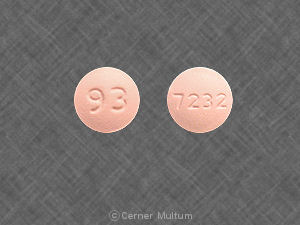Ribavirin Disease Interactions
There are 4 disease interactions with ribavirin.
Ribavirin (applies to ribavirin) anemia
Major Potential Hazard, High plausibility. Applicable conditions: Arrhythmias, Congestive Heart Failure, Ischemic Heart Disease
Oral ribavirin may cause anemia. The decrease in hemoglobin generally occurs within 1 to 2 weeks after initiation of therapy and stabilizes by week 4. Because significant anemia may adversely affect cardiac function, oral ribavirin should not be used in patients with severe anemia of any etiology or a history of serious or unstable heart disease. It should also be avoided in patients with hemoglobinopathies such as thalassemia or sickle- cell anemia. Therapy with oral ribavirin may be administered cautiously in patients with stable heart conditions. Both the hemoglobin level and cardiovascular status must be closely monitored. A permanent dosage reduction is required in these patients if the hemoglobin decreases by >= 2 g/dL during any 4- week period. If, after 4 weeks on the reduced dosage, the hemoglobin remains < 12 g/dL, therapy should be discontinued. The drug should also be withdrawn if cardiovascular status deteriorates. For all patients, a dosage reduction is recommended when hemoglobin is < 10 g/dL. If hemoglobin falls below 8.5 g/dL, oral ribavirin should be permanently discontinued. In clinical trials, hemoglobin values generally returned to baseline 4 to 8 weeks after cessation of therapy.
Ribavirin (applies to ribavirin) mechanical ventilation
Major Potential Hazard, Moderate plausibility.
The use of aerosolized ribavirin in patients requiring mechanical ventilation demands meticulous care by a trained staff in order to prevent complications associated with drug precipitation within the respiratory equipment. Close, continuous monitoring, as well as frequent cleaning and changes of line valves and ventilator tubings and filters, are conducive to favorable outcomes. Certain equipment implementations and settings are also essential, but specific details regarding equipment circuitry maintenance and modifications are beyond the scope of this application and should be obtained from the SPAG-2 Operator's Manual.
Ribavirin (applies to ribavirin) pulmonary deterioration
Major Potential Hazard, Moderate plausibility. Applicable conditions: Pulmonary Impairment
The use of aerosolized ribavirin has been associated with deterioration in pulmonary function, most significantly in patients with chronic obstructive pulmonary disease or asthma. Respiratory status should be monitored in all patients receiving aerosolized ribavirin, but in particular, patients with underlying respiratory disorders. Therapy should be stopped if sudden deterioration occurs, and reinstituted only with extreme caution and consideration of concomitant bronchodilator therapy.
Ribavirin (applies to ribavirin) renal dysfunction
Major Potential Hazard, High plausibility.
Orally administered ribavirin is metabolized by the liver, and both parent drug and metabolites are eliminated by the kidney. In patients with creatinine clearance between 10 and 30 mL/min, the mean area under the concentration-time curve has been shown to be three times greater than that in patients with normal renal function, presumably due to decreased clearance of the drug. Therapy with oral ribavirin should be administered cautiously in patients with creatinine clearance below 50 mL/min. Dosage adjustments may be necessary. The drug is not recommended for use in patients with severe renal impairment.
Switch to professional interaction data
Ribavirin drug interactions
There are 18 drug interactions with ribavirin.
Ribavirin alcohol/food interactions
There is 1 alcohol/food interaction with ribavirin.
More about ribavirin
- ribavirin consumer information
- Check interactions
- Compare alternatives
- Pricing & coupons
- Reviews (10)
- Drug images
- Side effects
- Dosage information
- During pregnancy
- Drug class: inhaled anti-infectives
- Breastfeeding
Related treatment guides
Drug Interaction Classification
| Highly clinically significant. Avoid combinations; the risk of the interaction outweighs the benefit. | |
| Moderately clinically significant. Usually avoid combinations; use it only under special circumstances. | |
| Minimally clinically significant. Minimize risk; assess risk and consider an alternative drug, take steps to circumvent the interaction risk and/or institute a monitoring plan. | |
| No interaction information available. |
See also:
Further information
Always consult your healthcare provider to ensure the information displayed on this page applies to your personal circumstances.


